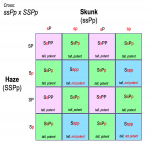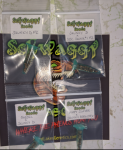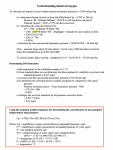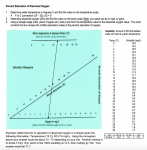Frimpong
🔥Freak Genetics🔥
God look at that cheesey bun . ?I would like to dedicate this meal to @spyralout , a poor soul who knows not the majesty of a ButterBurger. Can one truly consider it a life lived?
God look at that cheesey bun . ?I would like to dedicate this meal to @spyralout , a poor soul who knows not the majesty of a ButterBurger. Can one truly consider it a life lived?

My pleasure. Now you made me miss math. ?Thanks for this Schwaggy! That has to be one of the best explanation of expressions I have read in a very long time. I think I just had a flashback of karnaugh mapping for logical circuitry, and the linear algebra used.. lol
This is great information specifically in regards to excellent reference material for the future project!
FED EX OVERNIGHTI would like to dedicate this meal to @spyralout , a poor soul who knows not the majesty of a ButterBurger. Can one truly consider it a life lived?
I've tried 3 times already. Once the FedEx guy smells it, the package mysteriously goes missing.FED EX OVERNIGHT
I have been for the Skunky Brewster male and Green Crack S1 most closely. The most annoying so far is my GC sharp astringent vinegar smell seems to be recessive (makes sense b/c GC is more mango). The BX-ing has been an attempt to make that desirable trait true-breeding. These are the two that I've used in many pairings so I can see what tracks throughout. There are other notes for certain plants that seem to be appearing (Chem D variegation) along like heterozygous traits (Vv), but not as fully noted as with the two mentioned. I've noticed linked traits (two traits that seem to correlate together); Green Crack S1 crosses that have the heavy early frosting on secondary leaves has come with her tacky trichome texture.@Schwaggy P have you been cataloging which traits are dominant and recessive across all of your breeding stock? If so, do you find that expression is pretty similar across the genome? Also, what about incomplete dominance, do you see that factoring into the equation?

How many seeds do I pop????
When starting a breeding project, you’ll come to this question at some point. In general, you’ll want to pop as many as your space can handle as this is ultimately a roll of the dice. But, we can approach this with a bit more intent using Punnett Squares and the illustrated frequencies.
Ideally, your breeding project is a well thought out plan that includes specific targeted traits that you’d like to have express in a new line. This is what can be considered the difference between a cross and a strain.
A cross is usually the mating of 2 plants with little intent as to the dynamics of inheritance. There is usually minimal forethought behind long-term expressions and nebulous guidelines for what exactly constitutes a “finished product”. Crosses usually do not go beyond an initial F1 hybrid and serve to be a large potential for which plants are considered for selection/keepers.
A strain on the other hand is more aware of end goals that entail a specific group of expressed traits that serves to either bolster an already great line or create a genuinely new line such that the original parent stock is not immediately obvious in the progeny. These aimed-for traits will help guide the breeding process by deciding how far one must go to achieve the finished product. If your finished product were spitting out predictable plants of a different arrangement of traits or variations that the breeders of the original parent stock wouldn’t immediately identify, then it could be considered a new line.
When you’re deciding how many seeds to pop to create a cross, it’s usually a blind search as no roadmap exists for you to know where to look for what. Since the deciding factor is “total dankness”, this implies an implicit understanding of what constitutes total dankness. In other words, “you’ll know it when to see it.” Some say it’s as good a compass as any, but among the downsides to this approach is employing a Punnett Square for predictive purpose. This is usually the approach of the grower for smoke as the genotypes are irrelevant. You’d only care about the expressed phenotype for final keeper plants.
When you make your target traits explicit: Tall and Sleepy effect for example; you can now use the Punnett Square to figure how many seeds to pop. This differs greatly from the cross-maker or grower for smoke, because you’ll want to be more aware of the genotypes as you move through your breeding project. Picking a plant with (SS) instead of (Ss) will affect the next generation and your ultimate goal, so this is an important point to consider.
For example:
S=Tall, s=short
Z=Sleepy effect, z=not sleepy effect
If you wanted to have a true breeding female that reliably passes tall height and sleepy effect, you’d ideally choose the plant with the genotype (SSZZ). If you have a cross you made (or acquired) using parents that expressed these traits (phenotype) like OG, then you could assume the parents were at least dominant for the traits.
This assumption would look like: (SsZz) since the parents expressed the traits, we can at least assume this much about the parent genotype. It could also be (SS) or (ZZ), but we’re being conservative with our assumption, as (SS) would actually make things easier.
Since we can only make selections based on phenotype (we cant see the genotype, but we now at least know the frequency at which they appear), you’ll be picking the plants with either (SsZz), (SsZZ), (SSZz), or (SSZZ) as these all have the same phenotype (tall with sleepy effect).
This means you can expect 56% of your popped seeds to at least express the phenotype you’d like. But for this example, our aim is for a true breeding genotype (SSZZ). Based on the Punnett, that appears 1 in 16 seeds. This ratio is for the total population and since females are only 50% of the total, we’ll need to double the amount of seeds (16 to 32 total seeds) to make sure we have the minimum number of seeds to statistically expect the appearance of our female target genotype.
While the Punnett Square can’t tell you which of the potential genotypes is the SSZZ, it gives you a baseline number to increase your chances of finding it. Given the traits and assumed genotype of the parents, we now know that we should pop at least 32 seeds to have the genotype we’d like for our project. You would need to do some more work to figure which plant has the (SSZZ) genotype, but the point is we have a baseline seed number to pop in order to expect it.
There are tons of avenues to travel toward reaching a breeding goal, you can focus on one trait at a time and slowly build on them with subsequent generations or try for multiple traits per breeding step. The purpose here is not to give every possible example, but to show how the Punnett Square can be a tool to help you figure how many seeds to pop in order to find desired plants.
I came here looking for information and pictures relating to your Hell's Angel OG Bx1 and left feeling like I learned something. I appreciate that. Positive vibes...Is it a bad idea to use feminized plants for breeding?At some point in forum perusal, you will likely encounter some form of this question: “Can you use a feminized plant for breeding?” Answers will generally fall along yes or no, but lack a more full-throated explanation as to why the poster feels this is a good/bad practice.
Answers in the affirmative are usually guided by experience and take the form, “I have a feminized plant that is more stable than most reg plants. She doesn’t put out any hermie progeny.” While others take an opposite stance (can be guided by experience, but many times just repeating an assumption read from someone else), “No way! Feminized plants are inherently bad stock and will lead to hermie prone progeny.”
I will balance my stance by playing each side of this question and say that both of these sides are correct. While it seems counterintuitive to say both apparently contradictory answers are the case, I’ll illustrate using Punnett Squares.
Many times, traits that are considered bad can be recessive (think small letter allele), but can be “hidden” when paired with a dominant allele (think uppercase allele). Much like disease in humans, both partners must be carriers of specific genes in order for the disease to express in progeny. Statistically speaking, the chance of any two random partners both carrying this trait ensures the appearance of these genetic disorders is relatively low.
By selfing, or breeding a plant to itself, you are guaranteeing that whatever undesirable recessive traits lurk in the gene pool will necessarily double down and increase the chance of its expression in the progeny. What was before a possibility, has now been made a certainty.
Ultimately, the answer to this question is, “It depends.” This may not be totally satisfactory, but using the Punnett Squares, we can gain a better appreciation for the nuances involved with this concept.

I believe that Hippy Slayer is a Bodhi strain. Dirty Hippy x Road Kill SkunkSecond off... what in all that is good in this world is Hippy Slayer
I believe that Hippy Slayer is a Bodhi strain. Dirty Hippy x Road Kill Skunk
Thanks for the kind words and support.Love your commitment to the Plant
Of the Chem cuts, it sounds most like the SKVA. The lemons comment isn't something I get from her nose, but everything else you described sounds similar to her. Some speculate that OG Kush is a SKVA S1, so if that holds, there could be some lemon in there you might be able to tease out or you may have had an S1.Does this sound like the SKVA to you, or maybe the JB or maybe something else?
The Skunky VA x Skunky D would be the more likely of the two to spit out a knockout hit. The Skunky D leans more to the body blow from the Chem D. The Skunky VA will have phenos like the Chem you described with an almost overwhelming potency with more balance head/body from the Skunky Brewster.what do you think the chances of finding a good knock out in either Skunky VA or the Skunky VA x Skunky D crosses?
No name for that pairing. It should be a nice array of Chem Skunks to choose from.do you have any thoughts on a name for the Skunky VA x Skunky D cross yet? Skunky VD, Funky VD? VD Funk? I dunno... Anyway, looking forward to running them and finding some gems!
You'll be getting into some physics/chemistry abstractions (taking a few known formulae and tweaking/substituting a sequence of calculations to fit the exact situation you're looking to study). The biggest issue you'll be running into is the chemistry of your nutrient solution. Formulas are generally for pure water and standard pressures, so correcting for your nutrient levels and their possible oxygen affinities will be difficult to do a priori in abstract theoretical calculating. You may be better served by taking measurements of your dissolved oxygen in the reservoir for given variables and finding the relationships from experiment.would you happen to know a formula for how fast oxygen levels deplete per gallon of water, per hour, at what temp, etc?
 Understanding Dissolved Oxygen
Understanding Dissolved Oxygen https://dep.wv.gov/WWE/getinvolved/sos/Documents/SOSKit/DOSaturation.pdf
https://dep.wv.gov/WWE/getinvolved/sos/Documents/SOSKit/DOSaturation.pdf